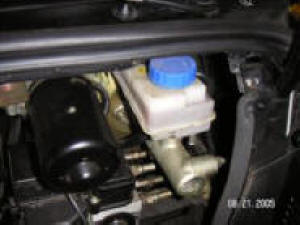| |

|
|
|
|
||
Changing Brake Fluid
The hydraulic brake system in Lamborghinis is fairly standard and simple. When you push down on the brake pedal, oil stored in a reservoir (fig 1) is pressurized in two cylinders (directly under the reservoir) and forced to all four brakes where the cylinders there under pressure push the brake pads on to the brake rotors thereby slowing the car down. As in almost all modern cars you are helped with pushing down on the brake pedal by a vacuum chamber driven by the engine. This is all fairly standard in today's cars. What is different in Lamborghinis is the scale and extent of things. These cars are large and heavy. They have enormous brakes that develop high pressures and heat. You can "stop on a dime", but you need to replace the oil in the lines periodically. Ok, first we need to get to the brake master cylinder. This is located behind the back panel in the trunk of the car. If you open the 8 screws (fig 2) it pops off. There is a wire connected to the trunk light. This light pops out from which the wires can be disconnected (fig 3). This then allows you to remove the panel completely. The brake fluid reservoir can be clearly seen (fig 4). Surround the base of the reservoir with a towel to collect any oil that may spill. Brake oil will dissolve paint. Take care not to get it on your hands or anywhere on the car. You should use brand name DOT 4 (SAE J1703) brake oil. Lamborghini recommends "ATE TYP 200". I use Castrol GT-LMA oil. To remove and add oil to the brake fluid reservoir I use a common kitchen device called "turkey roster dripper" (fig 6). If you wish to spare the oil you can completely empty the reservoir and fill it with new oil bleeding the lines (see below) as you go. The oil is not expensive, so in order not to get air in the lines I prefer to 3/4 empty the reservoir, fill it, bleed the lines (see below) and repeat the process 3 or four times.
Each brake shoe has two sets of caliper pistons. One on the outside brake disk surface. The other on the inside. To get to inside air bleed nipple you must remove the tire.
As always, if the above is difficult for you to understand. Do not attempt replacing the oil yourself. Bring it to somebody that knows what they are doing. To say brake failure can lead to serious accidents is an understatement! You are doing this at your own risk. Drive the car slowly at the start and repeatedly test the brakes before attempting normal driving.
|
|||||
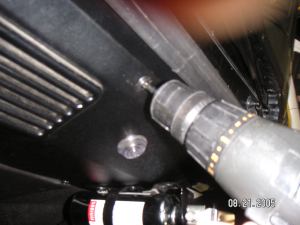 |
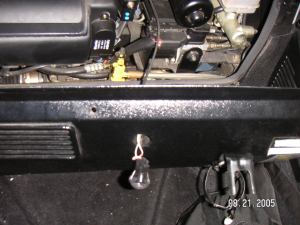 |
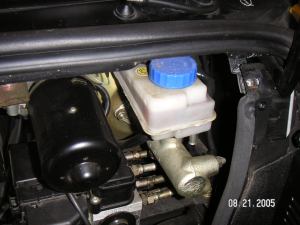 |
|||
| Fig 2. Remove back panel screws | Fig. 3. Remove light bulb connection |
Fig 4 master brake cylinder reservoir |
|||
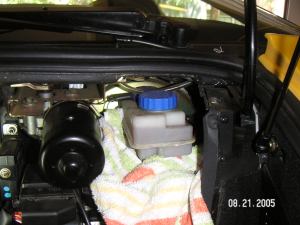 |
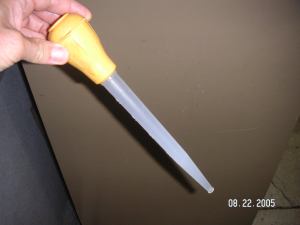 |
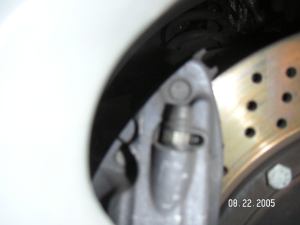 |
|||
| Fig 5 Surround reservoir with a towel | Fig 6 Dripper to add and remove oil | Fig 7 Close-u of brake bleed nipple |
|||
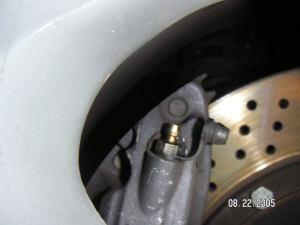 |
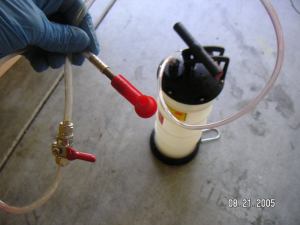 |
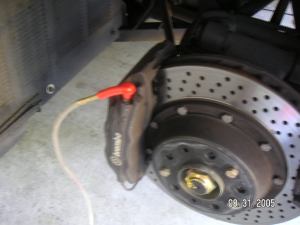 |
|||
| Fig 8.
Open nipple rubber cover
|
Fig 9. Vacuum pump to remove oil | Fig 10. Pump attached to outer air bleed nipple | |||
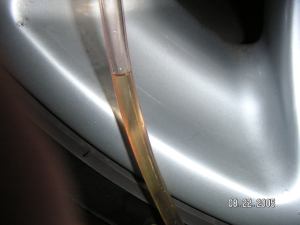 |
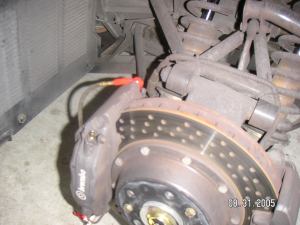 |
||||
| Fig 11. Old oil
removed from brake line
|
Fig 12. Pump attached to inner air bleed nipple | ||||
